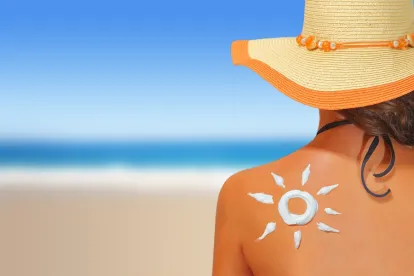On May 1, 2018, the Hawaii Senate and House of Representatives passed a bill that will ban the sale, offer of sale, or distribution in Hawaii of any sunscreen that contains oxybenzone or octinoxate, or both, without a prescription issued by a licensed healthcare provider to preserve marine ecosystems, beginning January 1, 2021: S.B. No. 2571, Environment; Water Pollution; Sunscreen; Oxybenzone; Octinoxate; Sale; Distribution; Prohibition. The bill received unanimous approval in the Senate and only four of fifty-one House members voted against it, but Governor David Y. Ige has not signed the bill as yet. The bill states that scientific studies have shown that both chemicals can induce “feminization in adult male fish and increase reproductive diseases in marine invertebrate species (e.g., sea urchins), vertebrate species (e.g., fish such as wrasses, eels, and parrotfish), and mammals (in species similar to the Hawaiian monk seal)” and induce “deformities in the embryonic development of fish, sea urchins, coral, and shrimp and induce neurological behavioral changes in fish that threaten the continuity of fish populations.”
Oxybenzone and octinoxate are among a group of chemical filters of ultraviolet (UV) light used in sunscreens. According to an Environmental Working Group 2017 survey, oxybenzone is found in 65 percent of commercially available chemically based sunscreens. There is disagreement among the scientific community about the role that oxybenzone and other chemical sunscreens play in the degradation of coral reefs. This February 2017 article in Nature discusses available science on reefs and sunscreens, including research findings that legislative champions of the Hawaii bill used as support for proposing its ban. As a possible alternative, mineral-based sunscreens, such as those with titanium dioxide and zinc oxide, have not been shown to cause harm to corals, according to the National Oceanic and Atmospheric Administration (NOAA).
Hawaii’s Department of Land and Natural Resources (DLNR) has been requesting that people who enter the ocean and use beach showers avoid using sunscreens containing oxybenzone since September 2016, stating that “studies have shown that oxybenzone causes deformities in coral larvae (planulae), making them unable to swim, settle out, and form new coral colonies. It also increases the rate at which coral bleaching occurs.”
Several sunscreen manufactures and trade associations opposed the bill, citing the U.S. Food and Drug Association’s (FDA) approval of oxybenzone and octinoxate (a/k/a octyl methoxycinnamate) as active ingredients in suncreen. FDA’s website lists oxybenzone and octyl methoxycinnamate as “acceptable active ingredients in products that are labeled as sunscreen” that protect “skin from the sun’s harmful UV rays.”
If enacted, Hawaii’s ban will be the first of its kind in the U.S. and in the world. Among U.S. states and territories, coral reefs can also be found off the coasts of Florida, Texas, Puerto Rico, and the Virgin Islands. These states and territories, and other countries with direct interests in preserving reef ecosystems, may begin to explore similar bans.


 />i
/>i
